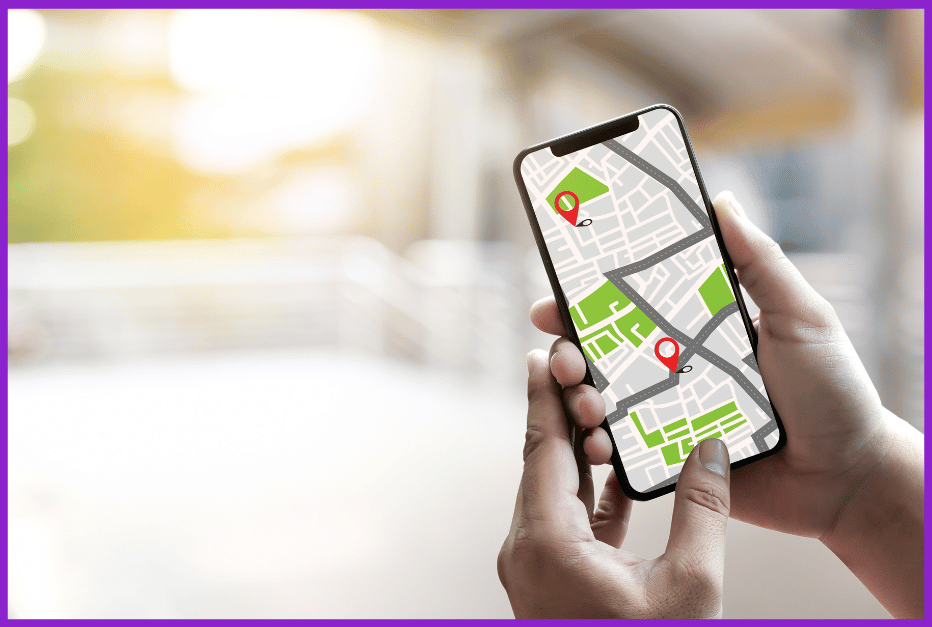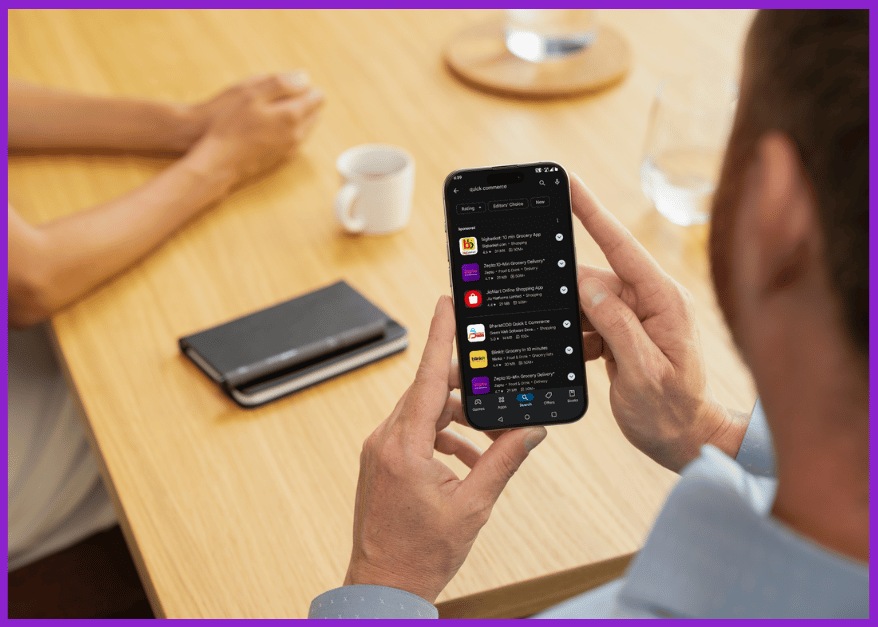
Imagine this: You’ve just launched your quick commerce venture – a service that promises lightning-fast delivery and instant convenience.
The market is buzzing, competition is fierce, and customers are spoilt for choice. How do you make sure your business not only stands out but thrives?
This article is your guide.
Whether you’re a seasoned marketer or a business owner stepping into the fast-paced world of quick commerce, you’ll find strategies, tools, and insights tailored to help you navigate the challenges and seize the opportunities.
From building brand awareness to creating customer loyalty, every tip here is designed with one goal in mind: helping you grow your venture in an ultra-competitive ecommerce landscape.
Let’s dive in and map out your journey to quick commerce success.
What is Quick Commerce?
Quick commerce, often called Q-Commerce or on-demand commerce, is the next evolution of e-commerce.
It focuses on delivering goods to customers at breakneck speeds, often within 30 minutes or less.
Unlike traditional e-commerce, where delivery times range from same-day to a few days, quick commerce thrives on immediacy – catering to consumers who value convenience and instant gratification.
At its core, quick commerce combines the efficiency of technology with hyper-local operations.

It’s not just about speed but also about accessibility, with businesses leveraging small fulfillment centers, micro-warehousing, and last-mile delivery networks to serve customers in record time.
Quick commerce primarily caters to urban consumers seeking instant access to essential items like groceries, personal care products, and ready-to-eat meals.
With a focus on speed and convenience, it’s transforming industries such as retail, food delivery, and pharmacy.
This model creates opportunities for businesses of all sizes to compete by offering hyper-local, time-saving solutions that meet the demands of today’s fast-paced lifestyles.
The Current State of Quick Commerce Industry
Quick commerce (q-commerce) is rapidly transforming into a global phenomenon, with notable growth fuelled by consumer demand for speed and convenience.
Here are some quick stats regarding the quick commerce market:
- According to Statista, global quick commerce market is anticipated to achieve a remarkable revenue milestone of US $170.80 billion (by 2024). The report says that this projection indicates a promising future for q-commerce market.
- Also, the same report expects revenue (from the global q-commerce market) will experience a steady CAGR of 9.24% (for 2024 – 2029), resulting in a projected market volume of $265.70 billion by 2029.
- According to Bonafide Research report, the US q-commerce market is projected to exceed $37 billion by 2024-29, driven by the rising demand for fast delivery and the convenience of online shopping.
- The same report says that the rise of dark stores and fulfilment centres in urban locations has permitted speedy delivery capabilities, allowing businesses to match consumers’ increased demand for immediacy.
- China is expected to generate the highest revenue in the quick commerce market, amounting to approximately $80.84 billion in 2024, leading the global market due to its large consumer base and rapid adoption of delivery services. (Statista)
- China’s quick commerce market is experiencing rapid growth due to the country’s large population, increasing urbanization, and tech-savvy consumers. (Statista)
- According to Chryseum report, the q-commerce marketing in India is estimated at USD 3.34 billion in 2024, and is expected to reach USD 9.95 billion by 2029, growing at a CAGR of greater than 4.5% during the forecast period (2024-2029).
- In the same report, the Indian q-commerce market is expecting 5x year-on-year growth (in FY23-24) when compared to India’s traditional ecommerce market.
These numbers underscore the competitive momentum of this industry in Asia, where fast delivery services and dense urban populations create ideal conditions for q-commerce growth.
Consumer Behavior Towards Q-Commerce
Consumers today prioritize speed and convenience over traditional shopping experiences.

This shift is particularly pronounced in younger demographics and urban areas, where demand for ultra-fast delivery has surged. Key factors influencing this behavior include:
- Time-sensitive lifestyles: Urban consumers seek instant solutions to their needs, with fast delivery becoming a standard expectation.
- Digital adoption: Increased use of apps like Zepto, Blinkit, Getir, Flink, and Postmates indicates a reliance on platforms that promise delivery within minutes.
- High-value convenience: As mentioned in the earlier section, the average revenue per user (ARPU) in the U.S. is projected to be $1,010 by 2029, demonstrating willingness to pay for fast and efficient services.
This growing consumer interest in q-commerce represents a lucrative opportunity for marketers and business owners to innovate and capture new customer bases.
Building efficient delivery networks, leveraging dark stores, and adopting localized strategies will be essential to thrive in this competitive space.
Key Marketing Strategies for Your Quick Commerce Venture Success
Marketing your quick commerce venture requires a mix of agility, precision, and creativity to meet the demands of a fast-paced market.
Here are some proven strategies to ensure your q-commerce business stands out and thrives:
1. Leverage Hyper-Local Marketing
Focus your efforts on targeting specific neighborhoods or regions where your services are operational. Use geotargeted ads, SEO, and partnerships with nearby businesses to increase visibility.

For instance, running location-based promotions on platforms like Instagram, TikTok, Pinterest, and local Facebook groups can quickly drive awareness.
2. Promote Speed as Your Unique Selling Proposition (USP)
Emphasize delivery speed in your marketing campaigns. Create engaging content showcasing how customers can get essential items in under 30 minutes. Videos and testimonials from satisfied customers can highlight this competitive edge.
3. Personalize Customer Experiences
Utilize data-driven insights to offer personalized product recommendations, discounts, and delivery preferences through your app/website. Implement loyalty programs that reward frequent users, fostering customer retention and repeat orders.
4. Capitalize on Social Proof
Encourage customers to share their positive experiences on social media. Showcase user-generated content (UGC) like photos, reviews, and testimonials. Highlighting real-time delivery success stories builds credibility and attracts new customers.
5. Offer Bundled Deals and Limited-Time Discounts
Create curated product bundles or time-sensitive offers to drive impulse purchases. Highlight these deals in your app, on social media, and through email campaigns to encourage quick conversions.
6. Utilize Influencer Marketing
Collaborate with local influencers who align with your brand’s image and niche. Nano-influencers with a dedicated, engaged following can effectively promote your service, especially in niche markets.
7. Adopt an Omnichannel Approach
Engage customers across multiple platforms, from your app and website to email, social media, Reddit, WhatsApp, and SMS. Consistent messaging and seamless transitions between channels enhance the overall customer journey.
8. Prioritize Mobile Optimization
Since most q-commerce transactions occur via mobile devices, ensure your app and website are fast, intuitive, and user-friendly.

A streamlined checkout process is critical for reducing cart abandonment. Make sure your app has high search visibility on both Google Play Store and Apple’s App Store.
9. Build Brand Trust with Transparency
Clearly communicate delivery times, fees, and refund policies. Offering live order tracking can reassure customers and enhance their trust in your service.
10. Engage Customers Through Gamification
Incorporate gamified elements such as challenges, reward points, or milestone achievements in your app. These features encourage continued engagement and foster customer loyalty.
By implementing these strategies, you can effectively market your q-commerce venture and create a loyal customer base that values speed, convenience, and reliability.
Tactical Tools and Platforms for Q-Commerce Marketing
This concise table organizes essential tools and platforms (will be part of your martech stack) by category to help streamline marketing efforts for your quick commerce business.
| Category | Tool/Platform | Purpose |
| Customer Relationship Management (CRM) | HubSpot CRM | Automates email campaigns, tracks interactions, and offers customer insights. |
| Salesforce Essentials | Manages customer data and delivers targeted promotions. | |
| Hyper-Local Marketing | Facebook Groups, WhatsApp, SMS | Boosts local visibility, collects reviews, and supports SEO efforts. |
| Nextdoor, Pinterest, Instagram, Tiktok | Engages local communities and promotes word-of-mouth marketing. | |
| Social Media Management | Meta Ads (Facebook & Instagram) | Runs geotargeted ads showcasing speed and convenience. |
| Hootsuite | Schedules posts, manages accounts, and monitors social media campaigns. | |
| Analytics and Performance Tracking | Google Analytics | Tracks website traffic, acquisition channels, and user behavior. |
| Mixpanel | Provides insights into app usage and engagement for optimization. | |
| Email and SMS Marketing | Mailchimp, Brevo | Simplifies email campaigns with segmentation and automation tools. |
| Twilio | Sends real-time SMS updates, including delivery and order confirmations. | |
| Customer Feedback & Reviews | Trustpilot | Collects customer reviews to build credibility and enhance visibility. |
| SurveyMonkey | Gathers actionable feedback to refine customer experience. | |
| E-commerce & Delivery Management | Shopify | Establishes online stores with built-in marketing and sales tools. |
| Shipday | Automates delivery dispatch and provides real-time order tracking. | |
| Influencer Marketing | Aspire | Connects with micro- and nano-influencers for targeted promotions. |
| Upfluence | Manages influencer collaborations and measures ROI. | |
| Gamification & Loyalty Programs | Kangaroo Rewards | Customizes loyalty programs with points, coupons, and gamified campaigns. |
| Zinrelo | Implements engaging rewards systems to improve customer retention. |
Common Marketing Challenges You Need to Be Aware Of
While quick commerce offers immense potential for growth, you may face unique challenges when promoting your q-commerce venture. Here’s a look at the most common hurdles and how they impact your marketing efforts:
1. High Customer Expectations for Speed
Quick commerce promises ultra-fast delivery, often within 10–30 minutes. This sets an exceptionally high bar for customer satisfaction. Delays due to traffic, logistics, or inventory shortages can damage your brand’s reputation.

Your marketing team must emphasize realistic delivery promises while mitigating negative feedback through transparent communication.
2. Intense Competition and Market Saturation
The rapid growth of q-commerce has attracted numerous players, leading to a crowded market. Competing against well-established brands with significant budgets can be daunting for new entrants.
Differentiation through hyper-local marketing, unique selling propositions (USPs), or specialized offerings becomes essential to stand out.
3. High Customer Acquisition Costs (CAC)
Attracting and retaining customers in this space often involves steep discounts, free trials, or aggressive advertising campaigns. These tactics inflate CAC, especially in markets with many competitors.
Sustainable customer retention strategies, such as loyalty programs, become critical to offset acquisition costs.
4. Balancing Speed with Quality
Maintaining product quality while fulfilling rapid delivery promises can be challenging. Poor quality of delivered items (e.g., damaged groceries or wrong orders) leads to dissatisfied customers and negative reviews.
This necessitates a focus on marketing the reliability of your service alongside speed.
5. Limited Brand Loyalty
Q-commerce customers often prioritize convenience and price over brand loyalty, quickly switching to competitors offering better deals.
Marketers need to focus on personalization, exceptional service, and community engagement to build lasting connections.
6. Logistical and Operational Constraints
Efficient last-mile delivery is vital for q-commerce success. However, operational hurdles such as limited dark store coverage, unpredictable demand surges, or delivery partner shortages can disrupt marketing campaigns focused on reliability and speed.
Marketing teams must coordinate closely with logistics to ensure promises align with capabilities.
7. Regulatory and Environmental Challenges
Operating in urban areas often involves navigating stringent regulations for delivery services, such as parking restrictions or vehicle emissions norms. Additionally, q-commerce faces scrutiny over its environmental impact, particularly with packaging waste and carbon footprints.

Marketing efforts should emphasize sustainability initiatives, such as eco-friendly packaging or carbon-neutral delivery, to address consumer concerns.
8. Consumer Trust and Adoption
In regions where q-commerce is still emerging, building trust can be challenging. New businesses must invest heavily in marketing to educate consumers about the reliability and convenience of their service while addressing scepticism.
9. Dynamic Consumer Behavior
Consumer preferences in quick commerce are highly dynamic, with fluctuating demands for products based on seasons, trends, or economic conditions. Marketing teams must stay agile, leveraging real-time data to predict and cater to these shifts effectively.
By understanding and addressing these challenges, marketers can develop strategies that resonate with customers, establish trust, and ensure sustainable growth in this competitive space.
Final Thoughts
Quick commerce represents an exciting frontier in modern retail, offering unparalleled speed and convenience to consumers.
However, its competitive landscape and unique challenges require a robust, well-planned marketing approach. By understanding current trends, leveraging innovative strategies, and utilizing the right tools, you can position your q-commerce venture for success.
If you’re ready to dive deeper into effective marketing strategies, explore the wealth of resources and insights already available on our website.
Explore our other blogs to discover actionable tips and strategies tailored for marketers like you!
